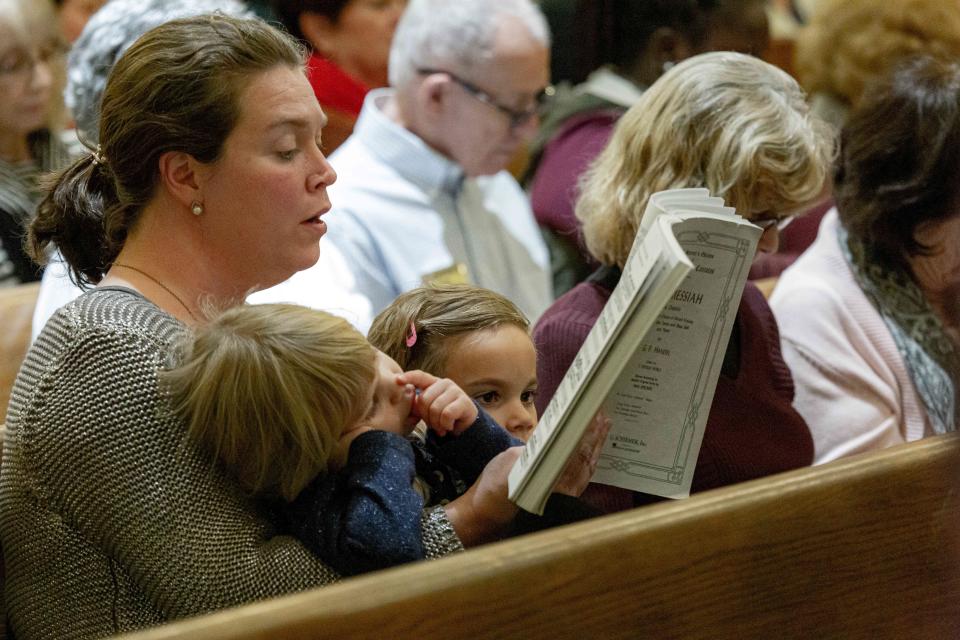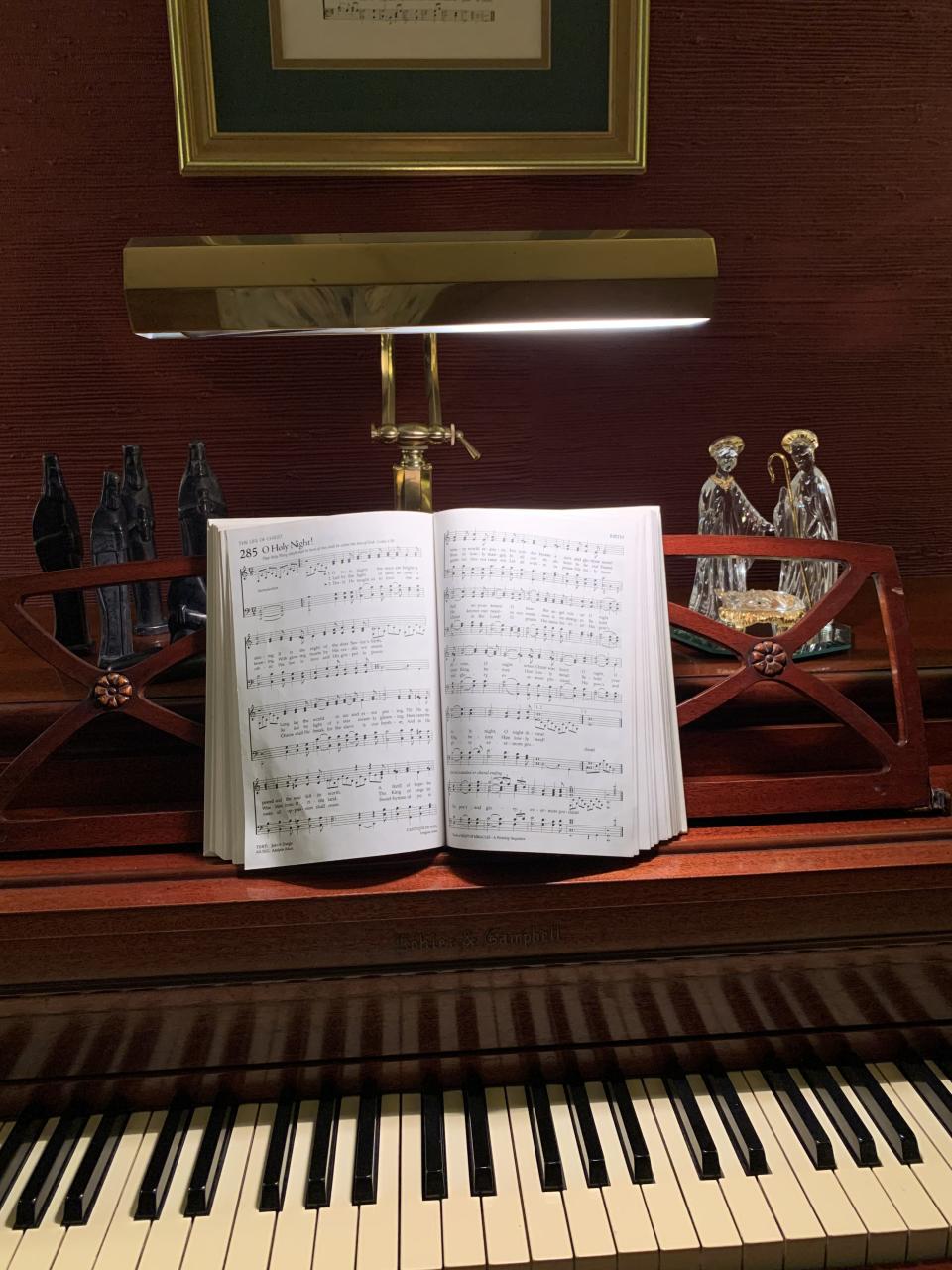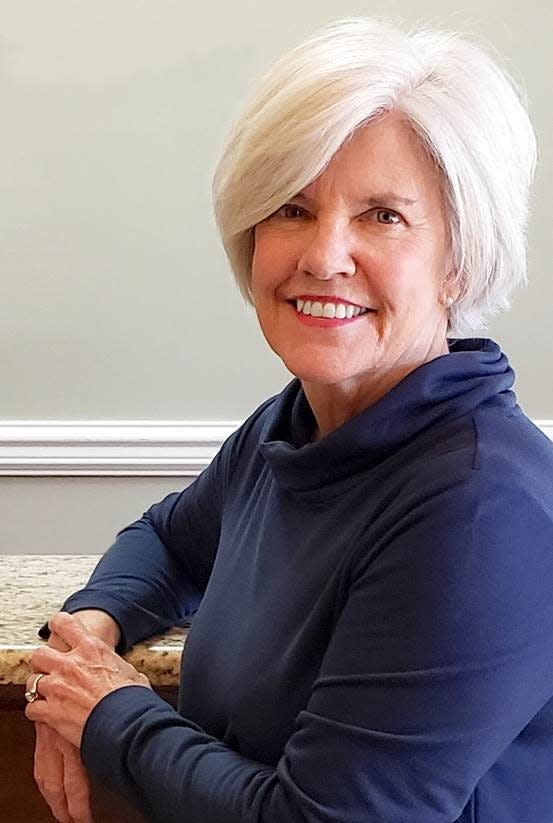O Holy Night: Christmas hymn captures message of love and peace
While I can no longer remember who said it and in which class, I recall being taught in seminary that we learn much of our theology from hymn writers. And, at least for me, there is no greater season of the Christian year than Christmas for beautiful hymn tunes and poignant lyrics.
Many of the songs played over store speakers and radio waves during the ever-extending Christmas period of the year are not hymns. The messages that they convey range from reindeer antics to unwelcome advances on a cold winter night. Some are cute, others much too long and repetitive, and still others a cheerful reminder of the season.

Storytelling hymns
One of my favorite Christmas hymns was introduced to me when I was a young adult with a 2-year-old daughter. I learned it at a church choir practice and thought it was mournfully beautiful. It is not one of the more popular Christmas hymns and at the time I appreciated its obscurity, at least to me. But more, I appreciated its simplicity in telling the story of the birth of Jesus in such a compelling way.
The first stanza sets the stage of the dark, cold bleakness of winter, drawing nature and “earth as hard as iron” into the narrative. The second stanza tells the story of angels and archangels gathering, as Luke’s gospel tells, and the Mother Mary worshipping her beloved baby with a kiss.
So recently a mother myself at the time I learned this hymn, I understood at a deep level the love I felt for my own baby and could imagine Mary’s love for her infant. The third verse, with its personal question about what might be given to the Christ child, drew me into the story even further than Mary’s kiss, as I thought about my commitment to ministry and the best gift being my heart, which I interpreted then and now to mean love.
The lyrics of “In the Bleak Midwinter” came from a poem written by the British poet, Christina Rossetti, which may be why the birth was set in snowy bleakness rather than the milder climate of Palestine, where Jesus was born. The hymn tune was written by an English composer, Gustav Holst, well-known for his excellence in orchestration, and who composed it specifically for this text.
Favorite carols
I wonder about the favorite Christmas hymns of others and think how this might make for interesting and meaningful conversation around the dinner table for some on Christmas Day.
I believe for many Christians the favorite is “Silent Night,” a German hymn that has an interesting history and a popular use, especially in worship settings on Christmas Eve. Written by young Father Joseph Mohr in the aftermath of the Napoleonic Wars, it has a theme and melody of peace.
This season, it was one of the carols spontaneously sung at a Delta Airline counter in the Atlanta airport on Nov. 27, 2023, a nice contrast to some of the less civil encounters on one of the highest travel days of the year, the Monday after Thanksgiving.
Longing for peace
The hymn that has captured my heart during the holy season approaching Christmas this year, is a French hymn, “O Holy Night.” I have been reflecting on the stanza from the English translation that seems poignantly relevant during Christmas 2023, when we all long for peace in our troubled world. It says:

Truly He taught us to love one another;His law is Love and His gospel is Peace;Chains shall he break, for the slave is our brother,And in his name all oppression shall cease,Sweet hymns of joy in grateful chorus raise we;Let all within us praise his Holy name!
The lyrics were composed from a poem, “Minuit, chrétiens,” written by poet, attorney, and wine merchant, Placide Cappeau, at the request of the parish priest in Roquemaure, France, in 1843. The tune was crafted for the poem by Adolph Adam, a French composer of many operas and ballets, that same year.
In 1847, the carol was premiered by a famous French opera singer, Emily Laurey, and in 1855 it was translated into English by a Unitarian Universalist pastor, John Sullivan Dwight, who felt strong parallels to the aforementioned stanza and the on-going civil unrest in the United States over slavery.
The history of this beautiful carol is controversial.
Placide Cappeau, the lyricist was allegedly an atheist, and Adolphe Adams, the composer, was believed to be Jewish, which poised a problem for church officials who discovered these connections years after the carol had gained popularity in France.
While it remains uncertain that the information about either man is true, we do know that the theology of the hymn was questioned by the Catholic Church.
Banned hymn
The church officials purportedly doubted the musicality of the hymn with a remarkable melody line that spans two octaves, as well as the orthodoxy of the lyrics which they said focused on humanity more than divinity, championed humility, and taught that all men and women have “souls,” a highly offensive concept to those supporting slavery.
The use of the hymn was banned by the church in reaction to these questions and concerns.
For me, the lyrics being written by someone who was atheist or disinterested in the church broadens the reach of the hymn and the scope of its message. Focusing on humanity more than divinity is at the very heart of the Incarnation, which is a humbling experience.
If the music was written by a Jewish person, what an honor for the birth of the Jewish Jesus to be captured in the powerful melody of a hymn that inspires such devotion and praise. And if the translation into English by a Unitarian Universalist minister resulted in an abolitionist anthem that influenced the freedom of slaves during the Civil War, I am grateful.
As relevant as the words of this stanza were in 1855 when they were translated into English and published by Dwight, known not only as a Unitarian Universalist pastor but also as the first American music critic, in his publication “Dwight’s Journal of Music,” they seem equally relevant today.
Beyond the music and the lyrics, what Christians celebrate in Christmas is that for love of humanity, God came to dwell among us, God incarnate, “in the flesh.” He came teaching us to love each other, adhering to the law of love and the gospel of peace.
While the theology of the hymn, “O Holy Night,” may be a faith expression, what is also clearly expressed is the power of love and the healing virtues of peace that we share in our common humanity.
It is my prayer this year for us all as we celebrate Christmas or give a nod to the day in whatever small way we may do this, that the love and peace of Christmas will be with you and those you love.

The Rev. Candace McKibben is an ordained minister and pastor of Tallahassee Fellowship.
This article originally appeared on Tallahassee Democrat: O Holy Night: Once banned hymn holds Christmas message of peace